10 spectacular temples in Asia
29.02.2020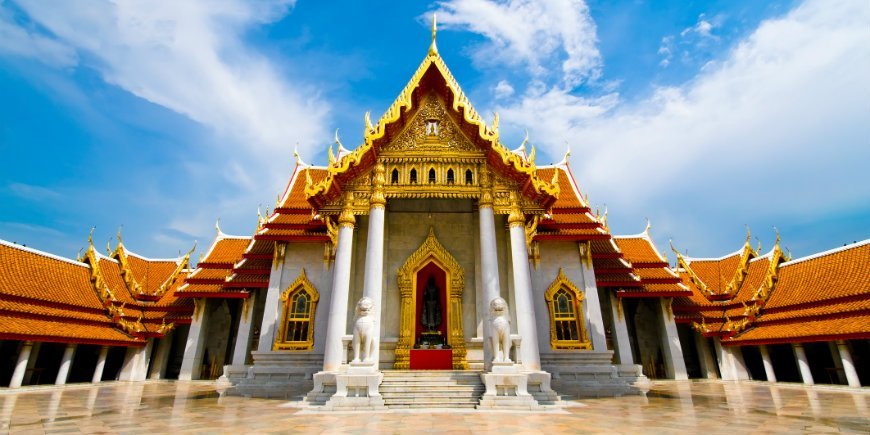
Asia is home to some of the world’s oldest, most beautiful and most interesting temples.
The ancient buildings have some amazing stories to tell and promise some impressive experiences.
While some temples are completely gold-plated, others are colourful and some are brimming with intriguing details and beautiful carvings.
We take you on a tour of ten of Asia’s most spectacular temples.
Sensoji in Japan
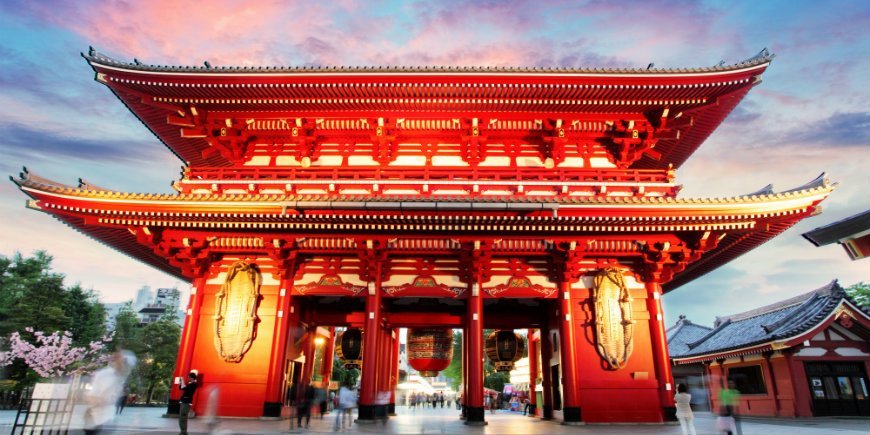
Situated in Asakusa, the old district in the Japanese capital is the beautiful Sensoji Temple.
The Buddhist temple is the oldest and probably most famous and most photographed temple in Tokyo – a city that is otherwise full of temples.
Sensoji receives a lot of visitors, but you will also meet the Japanese here. The temple holds a special significance for the locals who come to light incense sticks. They fan the holy smoke in the hope that it will keep them free of illness, bring them luck in life, help them to have a child or whatever else they are hoping for.
The street leading up to the temple is lined with fun souvenir shops and exciting food stalls, offering you every opportunity to buy something small or have a bite to eat.
The Buddhist cave temple in Sri Lanka
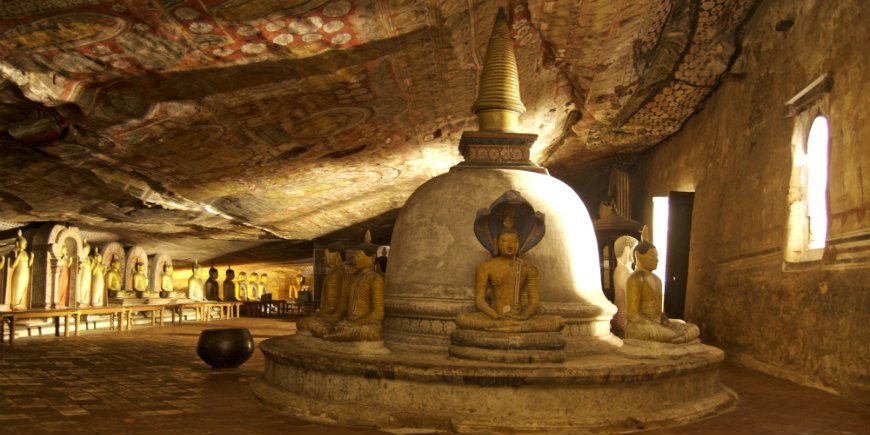
In Dambulla, one of the bigger cities in Sri Lanka, lies Sri Lanka’s best-preserved cave temple, the Golden Temple of Dambulla, also known as the Cave Temple.
Dating back to the 1st century BC, it is the most impressive cave temple in Sri Lanka.
The Buddhist temple is set in a huge rock and is a UNESCO World Heritage Site. As the name suggests, the temple is inside a cave, so its splendour is only really revealed once you enter its golden interior. Inside, you will be greeted by the spectacular sight of magnificent murals and amazing Buddha statues. The many steep steps you have to climb to get there are definitely worth the effort when you first enter the magical cave temple.
Wat Xiong Thong in Laos
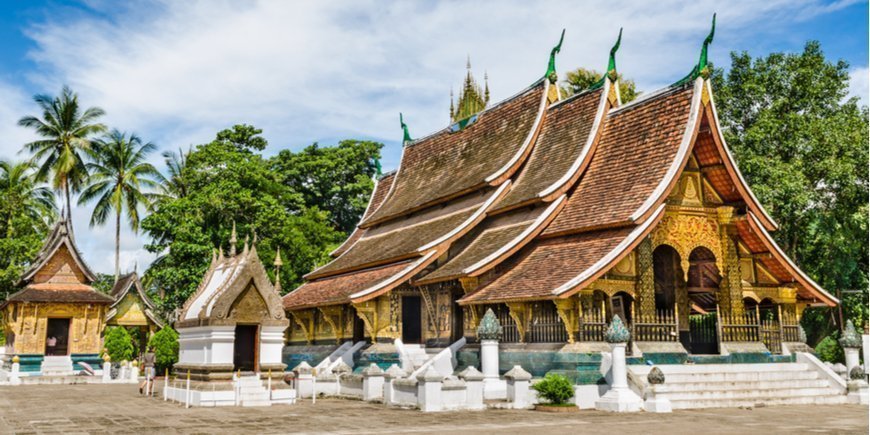
Situated in the beautiful city of Luang Prabang in Laos is Wat Xiong Thong temple, which is known as the “Golden Tree Monastery”.
Wat Xiong Thong is one of the most important temples in Luang Prabang and an important symbol of Buddhism in Laos. The Buddhist temple was built in the 16th century and, up until 1975, belonged to the royal family, which, among other things, used it for coronations. Today, it is used as a gathering place for various festivities in the city.
It’s difficult to say what the temple originally looked like, as it has undergone numerous restorations over time. In its current guise, the temple is adorned with neat, gold-plated mosaics and its characteristic layered roof, which hovers just above the ground.
Wat Pho in Thailand
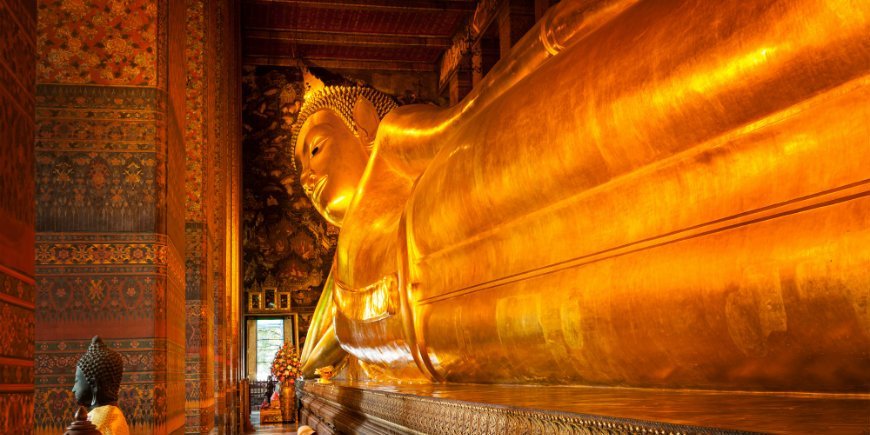
Wat Pho Temple is located in the Thai capital, Bangkok. Thailand has vast array of temples, and Wat Pho is the largest and oldest of them all.
The temple is part of a larger complex of several different buildings as well as a monastery that houses 300 monks.
Wat Pho is particularly famous for its giant reclining gold Buddha, which is 46 metres long and 14 metres high. The Buddha is made of bricks and plaster, completely coated in gold leaf. The impressive Buddha is an amazing sight, and when you’re done studying the massive gold figure, you can explore the 1,000+ Buddha images in the temple.
Wat Pho Temple is notably also the headquarters for the preservation and teaching of traditional Thai medicine and massage.
Angkor Wat in Cambodia
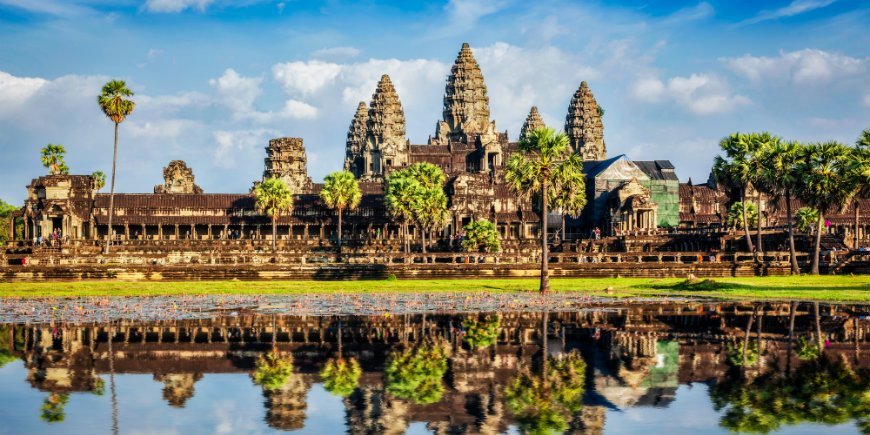
Angkor, in northern Cambodia, is the world’s largest temple complex.
The temple complex consists of several different temples. The best known of the temples, Angkor Wat, is the heart and soul of Cambodia and has also become the national symbol and synonym of the country.
Angkor Wat, which means “city of temples”, was built in the 12th century and was originally founded as a Hindu temple but was later converted into a Buddhist temple.
When you visit the temple, you will soon catch sight of the many celestial nymphs which adorn Angkor Wat. Almost 2,000 celestial nymphs are carved into the walls and each of them is truly unique.
With all its magnificence, absolutely stunning architecture and spectacular location, it’s not difficult to see why the temple complex is a UNESCO World Heritage Site.
My Son Temple district in Vietnam
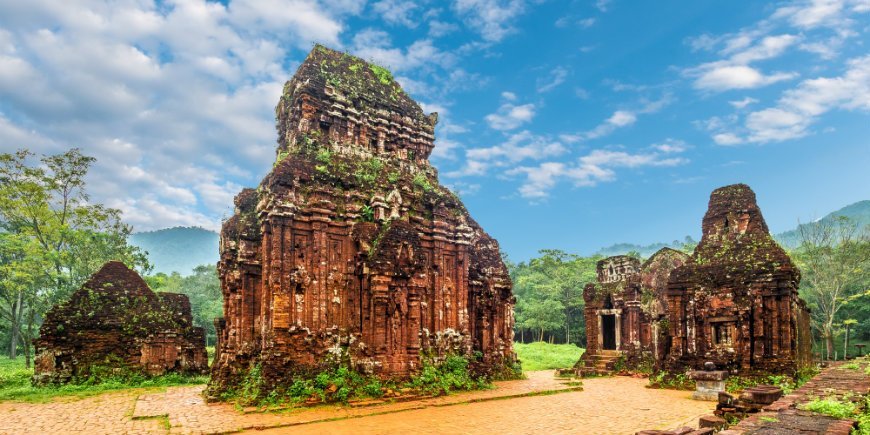
An hour from the city of Hoi An in Vietnam lies the fascinating My Son Temple district.
The temple district was constructed from the 4th–13th century AD by the Champa kings and was one of the most important constructions of the Chams. The area consists of several different temples scattered in clusters all around. Many of the temples were built for the purpose of having a place to worship the Hindu deities.
The Temple District was bombed by the Americans in 1969, destroying large parts of the temples. In the past, there were as many as 71 temples in the district, while just 20 remain today. However, it is still a hugely spectacular sight to see the remaining temples and ruins of the My Son Temple district, which is a UNESCO World Heritage Site.
Sri Mariamman Temple in Singapore
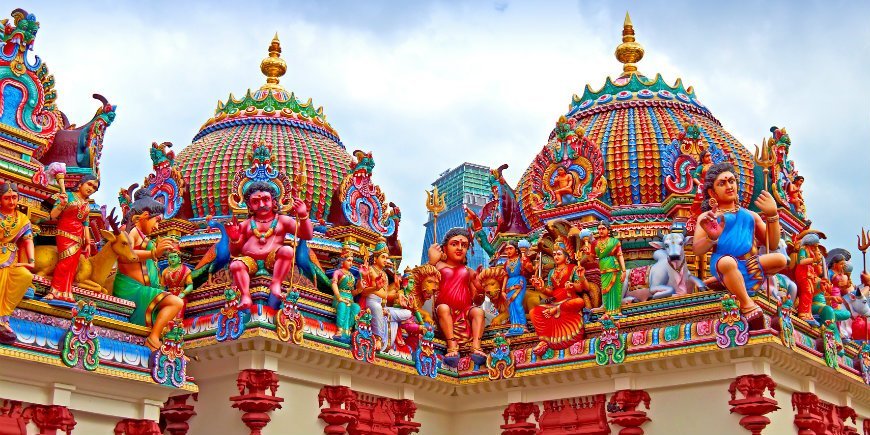
Set in the heart of Singapore’s exciting Chinatown area is the beautiful and colourful Sri Mariamman Temple.
Dating from 1827, the temple is the oldest Hindu temple in Singapore. It is dedicated to the goddess Mariamman who was known for her ability to cure disease.
Sri Mariamman is brimming with wonderful details and creative decorations of brightly-coloured plaster sculptures of gods, goddesses and mysterious beings. The decoration helps give the temple a unique and different look to many of the other gold-plated temples. The impressive and decorative tower above the main entrance is a particularly special sight.
Borobudur Temple in Indonesia
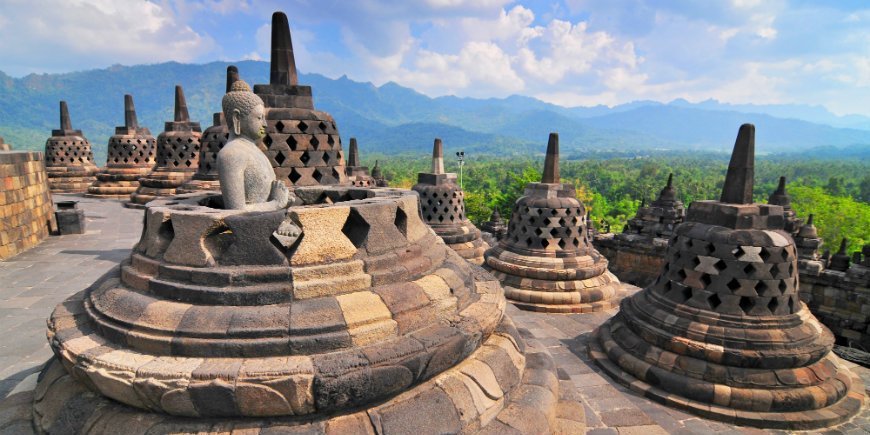
Borobudur Temple is located on the island of Java in Indonesia.
One of the oldest temples in the world, it was built in the 8th and 9th centuries from two million stones. It is the world’s largest Buddhist temple and one of Indonesia’s most important cultural districts.
The huge edifice consists of three levels, built up around a hill offering magical views of the green fields and dramatic mountains. Borobudur is characterised by its decorative expression, including the many bell-shaped monuments. More than 500 Buddha statues adorn the temple.
The magnificent temple is a UNESCO World Heritage Site and was restored in the 1970s with the help of UNESCO. Borobudur is wonderful to experience at any time of the day, but at dawn and dusk, the experience is really quite something.
Pura Besakih in Bali
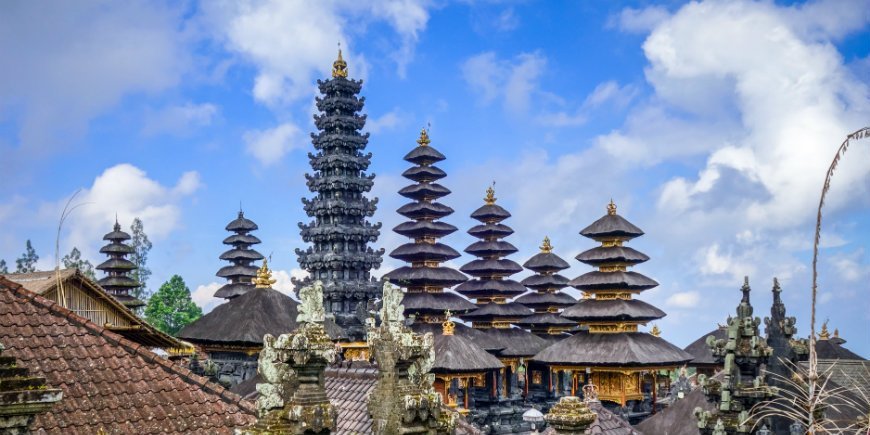
The Hindu temple, Pura Besakih, is Bali’s largest, holiest and most important temple.
Pura Besakih is known as the Mother Temple and consists of a magnificent complex of numerous temples large and small spread over six floors.
The temple complex is set on the slope of the sacred volcano, Mt Agung, and you can look forward to experiencing stunning mountain scenery around the huge temple. When you visit Pura Besakih, you also have the opportunity to experience the locals performing traditional ceremonies at the temple and worshipping the Hindu gods.
As visitors, you are welcome to explore many of the areas of the temple complex, but you should be aware that there are some places where visitors are only allowed to look in.
The Temple of Heaven in China
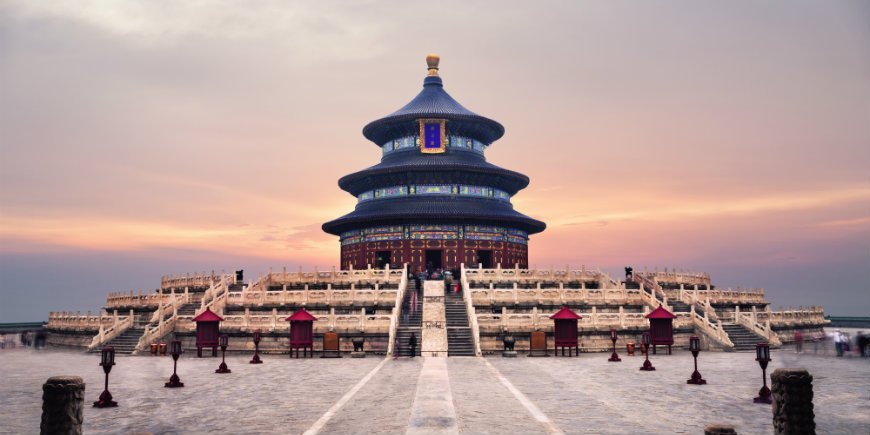
In vibrant Beijing, the capital of China, is the iconic Temple of Heaven.
The beautiful edifice was built in the early 1400s and was often visited by emperors of the Ming and Qing dynasties who came to pray for a good harvest.
Today, the temple is one of the most famous sights in Beijing and is visited by many visitors every year. The local people also come here – among other things to meditate.
The grounds of the temple cover an area larger than the Forbidden City, where you can look forward to experiencing the beautiful temple, the Whispering Wall, also known as the Echo Wall, and exploring the exciting park.
The entire design of the temple is highly symbolic and based on the ancient belief that heaven is round and the earth is square, and the temple symbolises the relationship between heaven and earth.
TourCompass – From tourist to traveller
